New York, New York
2012-2013
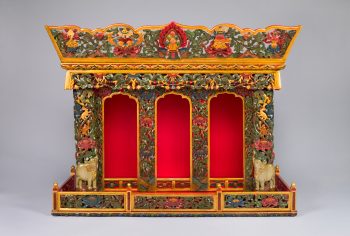
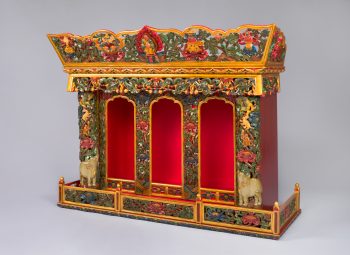
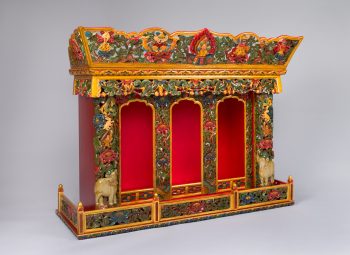
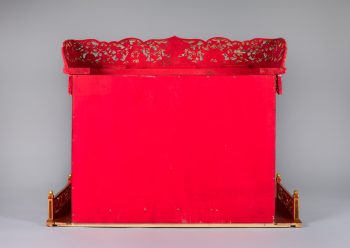
New York, New York
2012-2013




To present statues in a private place of worship, Tibetan Buddhists create special cabinets called “dharma displays” (chosham). They usually resemble small temples and can be simply or elaborately carved and painted, as in this carved example specifically commissioned for the Tibetan Buddhist Shrine Room.This chosham has three niches framed by decorative carvings of foliage. The upper part, or crown, is carved with the Three Jewels and the Eight Auspicious Symbols. The section below the crown represents hanging garlands of jewels and flowers. The outer columns feature the Four Harmonious Friends – an elephant, monkey, rabbit, and bird – standing on each other’s backs. The lowest frontal section, or veranda, is carved with lotus petals.
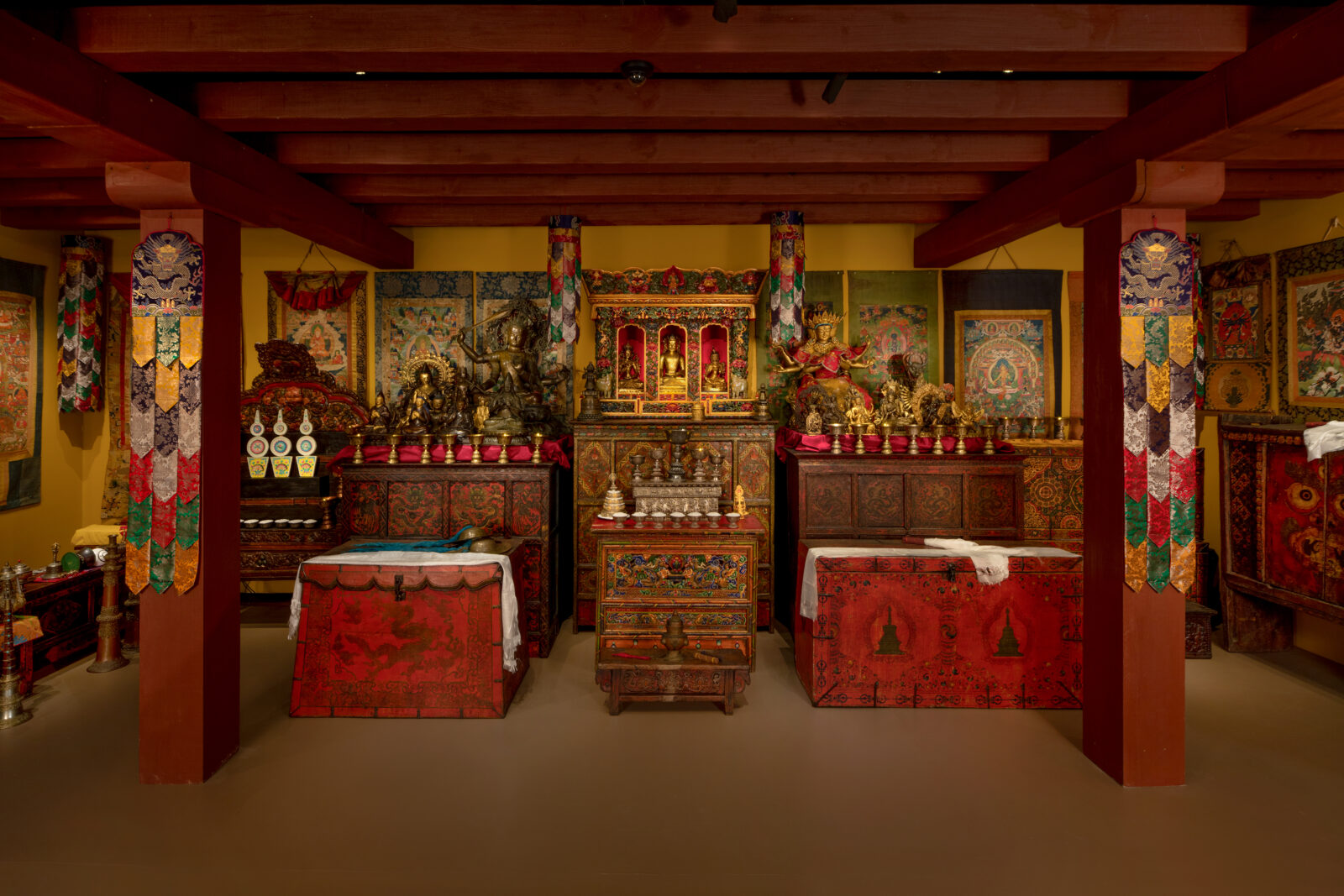
Photo by Dave de Armas
A virtuous feeling and deep respect toward an authentic teaching, teacher, or path. Buddhists believe that expansive study, analysis, and meditation are essential steps for cultivating a healthy and enduring devotion.
In Buddhism merit is accumulated through engaging in positive actions that lead to positive results, such as better rebirths. Buddhists gain merit by making offerings, donating to those in need, reciting mantras, and other good deeds.
Get the latest news and stories from the Rubin, plus occasional information on how to support our work.